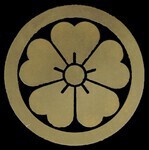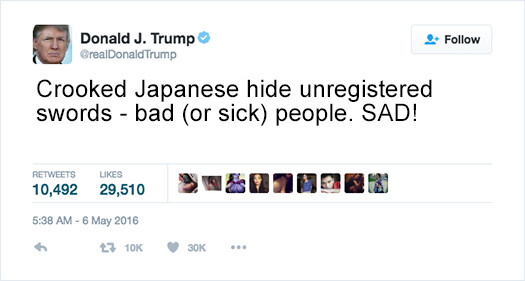-
Posts
3,242 -
Joined
-
Days Won
99
Content Type
Profiles
Forums
Events
Store
Downloads
Gallery
Everything posted by Guido
-

Qualifications For Sword Appraisers
Guido replied to Derek's topic in General Nihonto Related Discussion
Not really: https://www.japantoday.com/category/kuchikomi/view/for-most-Japanese-april-fools-day-still-no-joke I guess this is just another attempt at inventing a money-making-machine by some sword dealers. -
Reversed thinking. In the vast majority of cases, a tsunagi is made to hold the koshirae together after the sword is polished, to avoid that the blade will be scratched or otherwise soiled by the old saya - not as a template for another sword being used in the old mountings. A han-tsunagi costs a little less than two thirds of a full one, but since tsunagi aren't that expensive anyhow, most people will opt for the 1:1 version. OTOH, a koshirae without tsunagi is rare, but not unheard of, so going for a half-length one might save a lot of work (and paying a premium).
-

How Many Vintage Swords Still Exist?
Guido replied to Vermithrax16's topic in General Nihonto Related Discussion
The fear might be real, but is generally unsubstantiated. When it comes to inheritance tax, taxable asset in Japan are generally defined as tangible assets, real property, bank deposits, life insurance, retirement allowance, loan assets, bonds, stocks, patents, industrial intangible rights, and copy rights. Personal items are not subject to inheritance tax, except when a case can be made that they are tangible assets – which usually isn’t the case when it comes to personal collections, and would make the tax authorities incredibly busy estimating the value of antiques. In any case, and getting back to the o/t, most of the numbers in Mr. Nakamura’s estimations are either on public record, or can be obtained by simple counting, as Darcy pointed out. I used some of them in my August 2008 article on Japanese sword law without “extensive research”. However, when a claim is made that there are half a million unregistered swords in Japan – something people with decades of experience in sword circles in Japan are highly doubtful of (and I’m not only talking about myself) – it should be substantiated by giving sources for that estimate, besides some anecdotal evidence, and half-thought-out theories by supporters of it. Anyhow, I don’t want to spoil it for those who enjoy a good conspiracy theory, and will shut up on the topic now. P.S.: This is how a sword looks that can’t be registered for a variety of reasons, cut into pieces of 15 cm or less: -

Uda School Katana - Listing On Ebay
Guido replied to Vermithrax16's topic in Auctions and Online Sales or Sellers
Uda swords are more or less expected to have a somewhat rough hada. Assuming the blade is ō-suriage, the bō-hi is indeed ato since it stops above the habaki. -
What Brian said, except for the wobbling part . Katana often have what's called a "han-tsunagi", half tsunagi. They perfectly hold the koshirae together, but it's less work to make them.
-
ROFLMA, that's the most fitting description I ever read! Btw, they were even called 口紅, i.e. "lipstick".
-
An alternative reading of teisun 定寸, jōsun means "regular length" (of swords).
-
You might have something else in mind, but FWIW, in "regular" Japanese it's 丁度良い (chōdo ii).
-

How Many Vintage Swords Still Exist?
Guido replied to Vermithrax16's topic in General Nihonto Related Discussion
Yen 6,300 = US$ 57.- -

How Many Vintage Swords Still Exist?
Guido replied to Vermithrax16's topic in General Nihonto Related Discussion
This used to be one of the technicalities the Japanese police used to arrest yakuza if they couldn't charge them with anything else. I guess they learned their lessons by now. -

How Many Vintage Swords Still Exist?
Guido replied to Vermithrax16's topic in General Nihonto Related Discussion
Whenever a sword is imported (or re-imported) into Japan, it gets a new license - all of my swords have licenses from 2016, although I own them from before that year. There are also quite a few people who lose the license, so they get a new one. Btw, many yari are below 15 cm, so they don't need a license. -

How Many Vintage Swords Still Exist?
Guido replied to Vermithrax16's topic in General Nihonto Related Discussion
Impressive. Having lived the better part of my adult live in Japan, this openness in regard to ignoring the law is nothing the Japanese ever let me into. Did they say it in English, btw? -

How Many Vintage Swords Still Exist?
Guido replied to Vermithrax16's topic in General Nihonto Related Discussion
Possession of a sword without the proper registration isn't only a misdemeanor, but a criminal offense, punishable by up to Yen 300,000 and / or up to three years imprisonment. I don't know any country where the citizens are more law-abiding than in Japan - you've been here, Brian, what do you think how plausible that number is? The only source Nick Nakamura gives for arriving at all his approximations is "extensive research". If you ask nicely, I'll do some extensive research of my own, and will come up with even more spectecular numbers. Well, it's true, everybody says so, bigly! -
Plum, not cherry.
-
Looks like Etchū no Kami Masatoshi 越中守正俊, but gimei IMO.
-
Very sad news indeed - I will miss his contributions ...
-
NTK, NTKS, NBTKS ... I think we're getting lost in abbreviations here. Again, a picture of the origami would bring clarification.
-
Theoretically it's possible, but highly unlikekly. Usually it's Fujii-Wara 藤原 and Fuyu-Hiro 冬広 (i.e. fuji and fuyu, not only fu and then something + something)
-
Could you post a picture?
-
刕 instead of 州 isn't that uncommon, IIRC (and my memory isn't what it used to be anymore ) it's often used in Mino.
-

Please File This Under, 'must Be Nice'...
Guido replied to Pete Klein's topic in Auctions and Online Sales or Sellers
"Papered" is quite the understatement - it's a JūBi! -

Is That Realistic?
Guido replied to DaViebaPutkataMamina's topic in General Nihonto Related Discussion
QED Add this to the list: https://en.wikipedia.org/wiki/Straw_man Regards Mr. Frog -

Is That Realistic?
Guido replied to DaViebaPutkataMamina's topic in General Nihonto Related Discussion
Why don't you take a step back and do some more research on your own, instead of constantly asking on the NMB about the monetary value of swords? It reminds me of the saying "knowing the price of everything, and the value of nothing". And since you're easily offended - two topics locked already as a result of that - here we probably go ... -
Good point. Brian so far only asks for "a tiny amount" (see sticky at the top of this sub-forum), basically leaving it to the discretion of the seller. eBay charges 10%, but is a commercial enterprise with offices, employees, etc. How about something in between, like 5%? That, of course, shouldn't stop people from donating more if they make a profit .
-
Some people want to keep it private what they buy, and for how much; actually I'm among them. I bought a couple of times on NMB, without ever making it public. In two cases it was a 4 digit amount.




